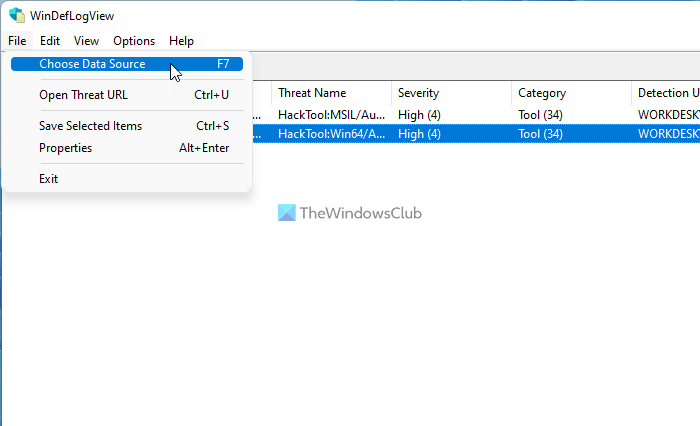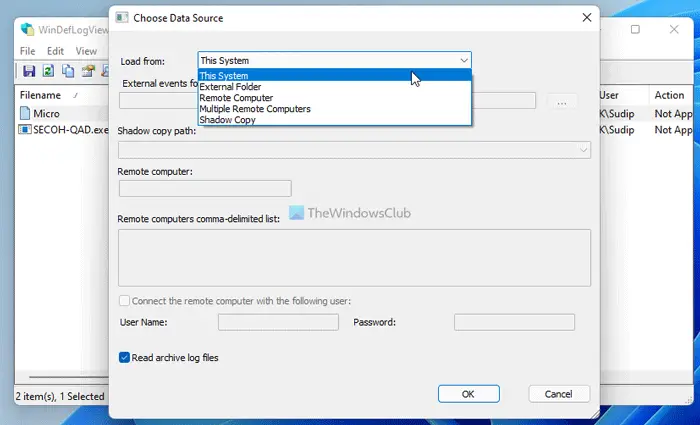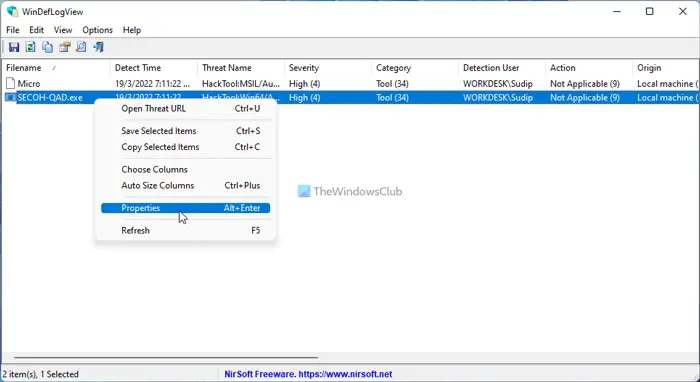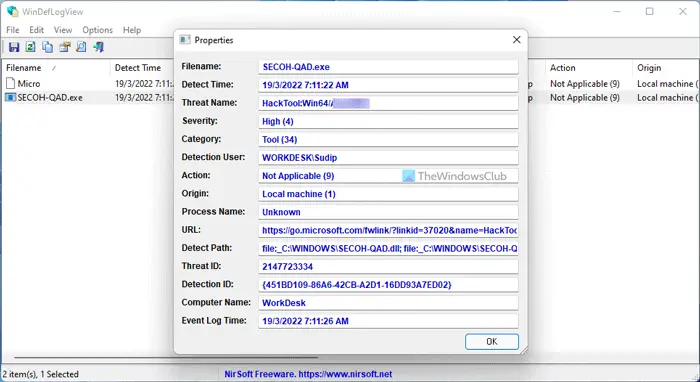At times, the information Windows Defender or Windows Security displays is quite difficult to understand. If you use this security shield on your computer and want to comprehend all the information provided by this app, you can use the WinDefLogView or Windows Defender Log Viewer. It fetches data from the event log and displays all the information generated by Windows Defender.
Whether you run a Quick scan or Full scan, Windows Security scans for potential threats, malicious files, virus, malware, etc. If it finds anything suspicious, it flags the file immediately. Then, you can find the details such as file location, associated Registry path, service, Task Scheduler information, etc. However, at times, it might be complex for some threats. That is why you can use WinDefLogView, which simplifies everything and displays all the details in an organized format. For your information, it shows the following things:
- File name
- Threat name
- Detection time, Severity
- Category
- Detection user
- Action
- Origin
- Process name
- URK
- Detect path
- Threat ID
- Detection ID
- Computer name
- Event Log Time
It displays the computer name because it can fetch data from external sources while using it on a network. Whether Windows Security recognized one or multiple threats, it can fetch everything from the corresponding log file. For you information, Windows Security stores the log file here: C:\ProgramData\Microsoft\Windows Defender\Support.
Read Windows Defender Event Log using WinDefLogView
To read Windows Defender Event Log using WinDefLogView, follow these steps:
- Download the app and double-click on the executable file.
- Go to File > Choose Data Source.
- Select the source and click OK.
- Click the Refresh button.
- Right-click on the threat and select Properties.
- Find all the details here.
To know more about the process, continue reading.
First, you need to download the app from the official website, extract it, and double-click on the WinDefLogView.exe file.
Then, you need to choose the data source. For that, click on File and select the Choose Data Source option.

For your information, it can detect data from these sources:
- This System
- External Folder
- Remote Computer
- Multiple Remote Computers
- Shadow Copy
As you are using your own computer, choose the This System option and click the OK button.

Next, click on the Refresh button. Then, it displays all the detected threats on your screen. You can right-click on any threat and select the Properties option to find all the details.

It is possible to copy all the data to the clipboard so that you can share them with anybody for further troubleshooting.

On the other hand, if it shows tons of threats and you want to find a particular one, you can use the search option. For that, click on the search icon, and enter the keyword as per your requirements.
That’s all! I hope this guide helped. If you like, you can download WinDefLogView from nirsoft.net.
Read: Where is Windows Defender logs location?
How do I read Windows Defender logs?
There are mainly two ways to rear Windows Defender or Windows Security logs on Windows 11 or Windows 10. First, you can get the help of the Event Viewer. It stores all the information regarding the Windows Security scans performed on your PC. However, if that is time-consuming for you, you can download the WinDefLogView, which is a portable application intended for making it easy for users to read the Windows Defender logs.
Read: How to use Windows Security in Windows 11 for best protection.
Does Windows Defender have a log file?
Yes, Windows Defender has multiple log files. It creates a log whenever you perform a scan on your PC. Whether it is a Quick scan, Full scan, Custom scan, or Microsoft Defender Offline scan, Windows Defender creates a log every time. You can find the log files here: C:\ProgramData\Microsoft\Windows Defender\Support. However, if you want to read the log files in a user-friendly way, you can make use of WinDefLogView.
Read next: How to use Event Viewer to check unauthorized use of Windows computer.
Leave a Reply